Preparation of Ultrafine-Grained Continuous Chips by Cryogenic Large Strain Machining
Abstract
1. Introduction
2. Materials and Methods
3. Results and Discussion
3.1. Produced Chips
3.2. Hardness
3.3. Microstructure
4. Conclusions
- The chip’s hardness decreases from the maximum value and stabilizes in a certain range with increasing velocity. The CT chip shows higher microhardness, and the difference in hardness between CT chips and RT chips increase with increasing speed.
- The grain size of RT and CT samples are both mainly distributed in the range of 100–300 nm. RT samples’ microstructures are more greatly influenced by machining parameters, elongated grains, and many precipitates exist in RT chips at the 10rake angle and 476 mm/s cutting speed. Furthermore, the microstructure at the 20 rake angle and the 2053 mm/s velocity reveal that most of the dislocations are annihilated and accompanied by growing dispersoids and a large number of recrystallizations. However, CT samples remain at a higher dislocation density and smaller grain size among various machining parameters which improve its mechanical properties.
- Due to the formation of lots of precipitations in RT-FM, the chip is prone to crack localization and fracture, and especially at high speed, the chip’s crack is pronounced, so that sawtooth chips are very likely to be produced in RT-FM. Deformation at CT can quickly take away a lot of heat and delay precipitation and diffusion, improving the dislocation accumulation capability and enhancing the alloy’s work hardening rate to ensure uniform and stable plastic deformation of the aluminum alloy, thus producing UFG materials having a smoother and continuous morphology.
Author Contributions
Funding
Acknowledgments
Conflicts of Interest
References
- Weiss, M.; Taylor, A.S.; Hodgson, P.D.; Stanford, N. Strength and biaxial formability of cryo-rolled 2024 aluminum subject to concurrent recovery and precipitation. Acta Mater. 2013, 61, 5278–5289. [Google Scholar] [CrossRef]
- Yu, H.L.; Su, L.H.; Lu, C.; Tieu, K.; Li, H.J.; Li, J.T.; Godbole, A.; Kong, C. Enhanced mechanical properties of ARB-processed aluminum alloy 6061 sheets by subsequent asymmetric cryorolling and ageing. Mater. Sci. Eng. A 2016, 674, 256–261. [Google Scholar] [CrossRef]
- Zhao, Y.H.; Liao, X.Z.; Jin, Z.; Valiev, R.Z.; Zhu, Y.T. Microstructures and mechanical properties of ultrafine grained 7075 Al alloy processed by ECAP and their evolutions during annealing. Acta Mater. 2004, 52, 4589–4599. [Google Scholar] [CrossRef]
- Edalati, K.; Cubero-Sesin, J.M.; Alhamidi, A.; Mohamed, I.F.; Horita, Z. Influence of severe plastic deformation at cryogenic temperature on grain refinement and softening of pure metals: Investigation using high-pressure torsion. Mater. Sci. Eng. A 2014, 613, 103–110. [Google Scholar] [CrossRef]
- Yin, X.L.; Pi, Y.Y.; He, D.; Zhang, J.Y.; Deng, W.J. Development of ultrafine grained Al 7075 by cryogenic temperature large strain extrusion machining. J. Mater. Res. 2018, 33, 3449–3457. [Google Scholar] [CrossRef]
- Deng, W.J.; Lin, P.; Xie, Z.C.; Li, Q. Analysis of large-strain extrusion machining with different chip compression ratios. J. Nanomater. 2012, 11, 5271–5282. [Google Scholar] [CrossRef]
- Lin, P.; Xie, Z.C.; Li, Q. Effect of the friction coefficient on large strain extrusion machining. Appl. Mech. Mater. 2013, 273, 138–142. [Google Scholar] [CrossRef]
- Merchant, E.M. Mechanics of the metal cutting process. I. orthogonal cutting and a type 2 chip. J. Appl. Phys. 1945, 16, 267. [Google Scholar] [CrossRef]
- Swaminathan, S.; Shankar, M.R.; Lee, S.; Hwang, J.; King, A.H.; Kezar, R.F.; Rao, B.C.; Brown, T.L.; Chandrasekar, S.; Compton, W.D.; et al. Large strain deformation and ultra-fine grained materials by machining. Mater. Sci. Eng. A 2005, 410, 358–363. [Google Scholar] [CrossRef]
- Deng, W.J.; Xia, W.; Li, C.; Tang, Y. Ultrafine grained material produced by machining. Mater. Manuf. Process. 2010, 25, 355–359. [Google Scholar] [CrossRef]
- Chinh, N.Q.; Gubicza, J.; Czeppe, T.; Lendvai, J.; Xu, C.; Valiev, R.Z.; Langdon, J.G. Developing a strategy for the processing of age-hardenable alloys by ECAP at room temperature. Mater. Sci. Eng. A 2009, 516, 248–252. [Google Scholar] [CrossRef]
- Shaeri, M.H.; Salehi, M.T.; Seyyedein, S.H.; Abutalebi, M.R.; Park, J.K. Microstructure and mechanical properties of Al-7075 alloy processed by equal channel angular pressing combined with aging treatment. Mater. Des. 2014, 57, 250–257. [Google Scholar] [CrossRef]
- Lee, Y.B.; Shin, D.H.; Park, K.T.; Nam, W.J. Effect of annealing temperature on microstructures and mechanical properties of a 5083 Al alloy deformed at cryogenic temperature. Scr. Mater. 2004, 51, 355–359. [Google Scholar] [CrossRef]
- Yu, H.L.; Lu, C.; Tieu, K.; Li, H.J.; Godbole, A.; Liu, X.; Kong, C. Enhanced materials performance of Al/Ti/Al laminate sheets subjected to cryogenic roll bonding. J. Mater. Res. 2017, 32, 3761–3767. [Google Scholar] [CrossRef]
- Panigrahi, S.K.; Jayaganthan, R. Development of ultrafine grained high strength age hardenable Al 7075 alloy by cryorolling. Mater. Des. 2011, 32, 3150–3160. [Google Scholar] [CrossRef]
- Shi, J.T.; Hou, L.G.; Zuo, J.R.; Zhuang, L.Z.; Zhang, J.S. Cryogenic rolling-enhanced mechanical properties and microstructural evolution of 5052 Al-Mg alloy. Mater. Sci. Eng. A 2017, 701, 274–284. [Google Scholar] [CrossRef]
- Trent, E.M. Metal cutting and the tribology of seizure: I seizure in metal cutting. Wear 1988, 128, 29–45. [Google Scholar] [CrossRef]
- Mabrouki, T.; Girardin, F.; Asad, M.; Rigal, J.F. Numerical and experimental study of dry cutting for an aeronautic aluminum alloy (A2024-T351). Int. J. Mach. Tool Manuf. 2008, 48, 1187–1197. [Google Scholar] [CrossRef]
- Zhao, Y.H.; Liao, X.Z.; Cheng, S.; Ma, E.; Zhu, Y.T. Simultaneously increasing the ductility and strength of nanostructured alloys. Adv. Mater. 2005, 18, 2280–2283. [Google Scholar] [CrossRef]
- Yin, X.L.; Chen, H.T.; Deng, W.J. Effects of machining velocity on ultra-fine grained al 7075 alloy produced by cryogenic temperature large strain extrusion machining. Materials 2019, 12, 1656. [Google Scholar] [CrossRef]
- Kanani, M.; Sohrabi, S.; Ebrahimi, R.; Paydar, M.H. Continuous and ultra-fine grained chip production with large strain machining. J. Mater. Process. Technol. 2014, 214, 1777–1786. [Google Scholar] [CrossRef]
- Yin, X.L.; Deng, W.J.; Zou, Y.H.; Zhang, J.Y. Ultrafine grained Al 7075 alloy fabricated by cryogenic temperature large strain extrusion machining combined with aging treatment. Mater. Sci. Eng. A 2019, 762, 138106. [Google Scholar] [CrossRef]
- Zou, X.L.; Yan, H.; Chen, X.H. Evolution of second phases and mechanical properties of 7075 Al alloy processed by solution heat treatment. Trans. Nonferrous Met. Soc. China 2017, 27, 2146–2155. [Google Scholar] [CrossRef]
- Campbell, C.E.; Bendersky, L.A.; Boettinger, W.J.; Ivester, R. Microstructural characterization of Al-7075-T651 chips and work pieces produced by high-speed machining. Mater. Sci. Eng. A 2006, 430, 15–26. [Google Scholar] [CrossRef]
- Sun, Z.C.; Zheng, L.S.; Yang, H. Softening mechanism and microstructure evolution of as-extruded 7075 aluminum alloy during hot deformation. Mater. Charact. 2014, 90, 71–80. [Google Scholar] [CrossRef]
- Shanmugasundaram, T.; Heilmaier, M.; Murty, B.S.; Sarma, V.S. Microstructure and mechanical properties of nanostructured al-4cu alloy produced by mechanical alloying and vacuum hot pressing. Metall. Mater. Trans. A 2009, 40, 2798–2801. [Google Scholar] [CrossRef]
- Ma, K.K.; Wen, H.M.; Hu, T.; Topping, T.D.; Isheim, D.; Seidman, D.N.; Lavernia, E.J.; Schoenung, J.M. Mechanical behavior and strengthening mechanisms in ultrafine grain precipitation-strengthened aluminum alloy. Acta Mater. 2014, 62, 141–155. [Google Scholar] [CrossRef]
- Song, M. Modeling the hardness and yield strength evolutions of aluminum alloy with rod/needle-shaped precipitates. Mater. Sci. Eng. A 2007, 443, 172–177. [Google Scholar] [CrossRef]
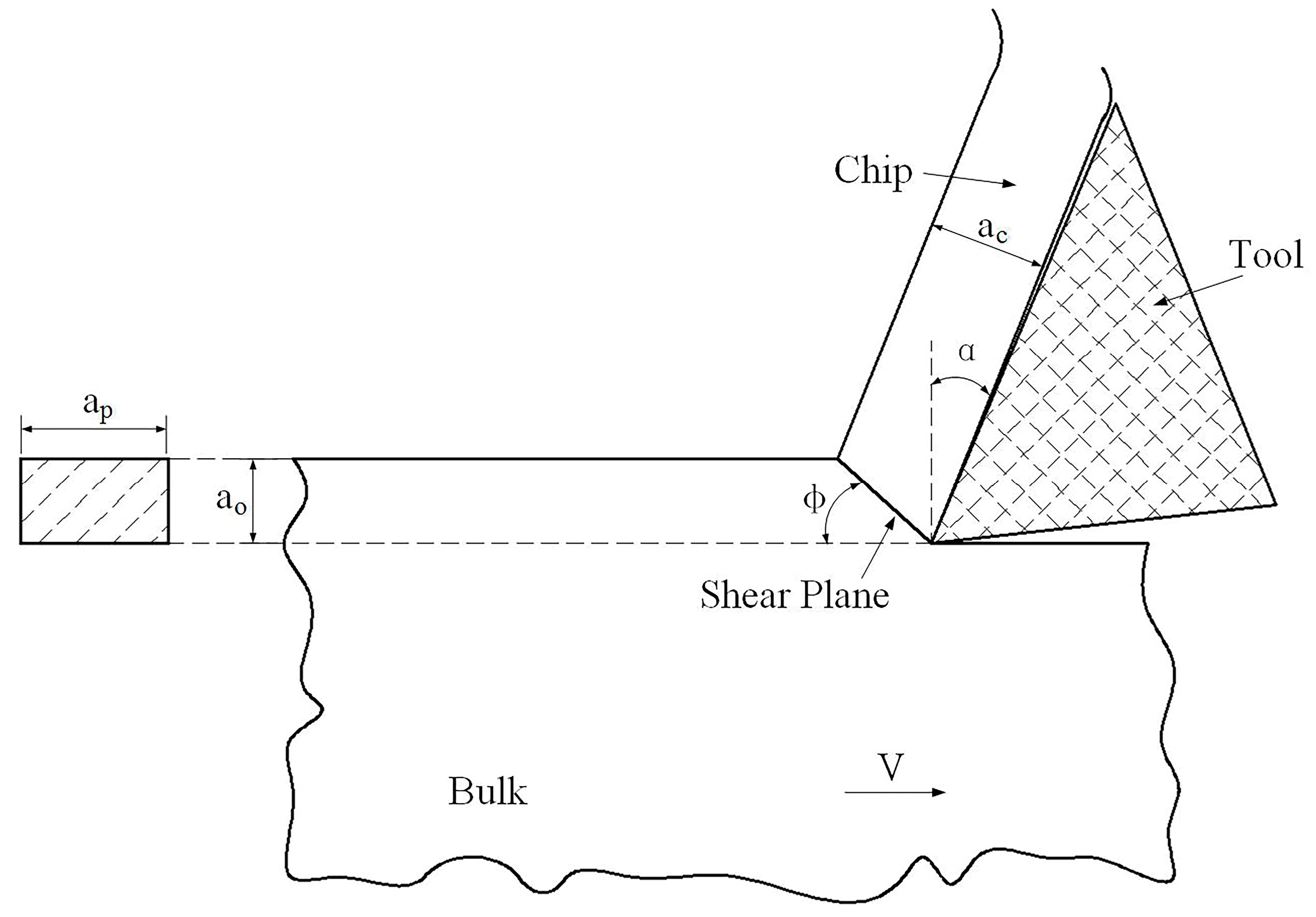
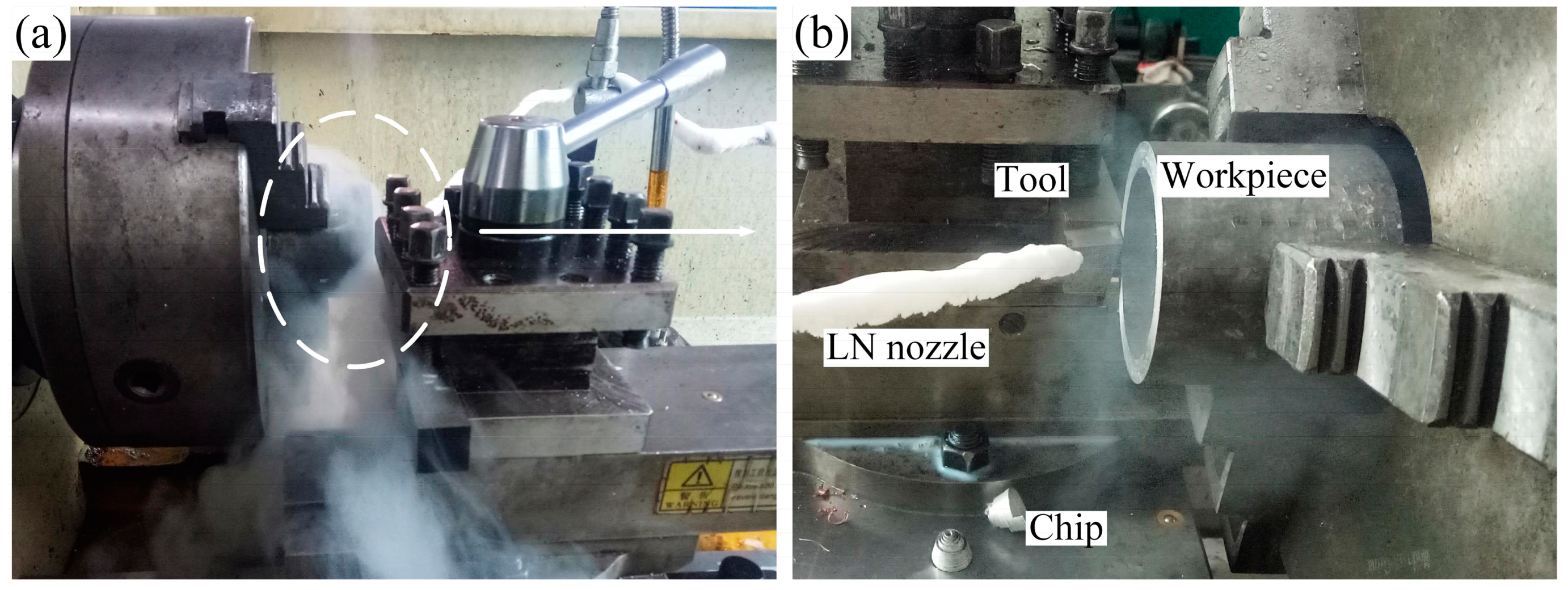

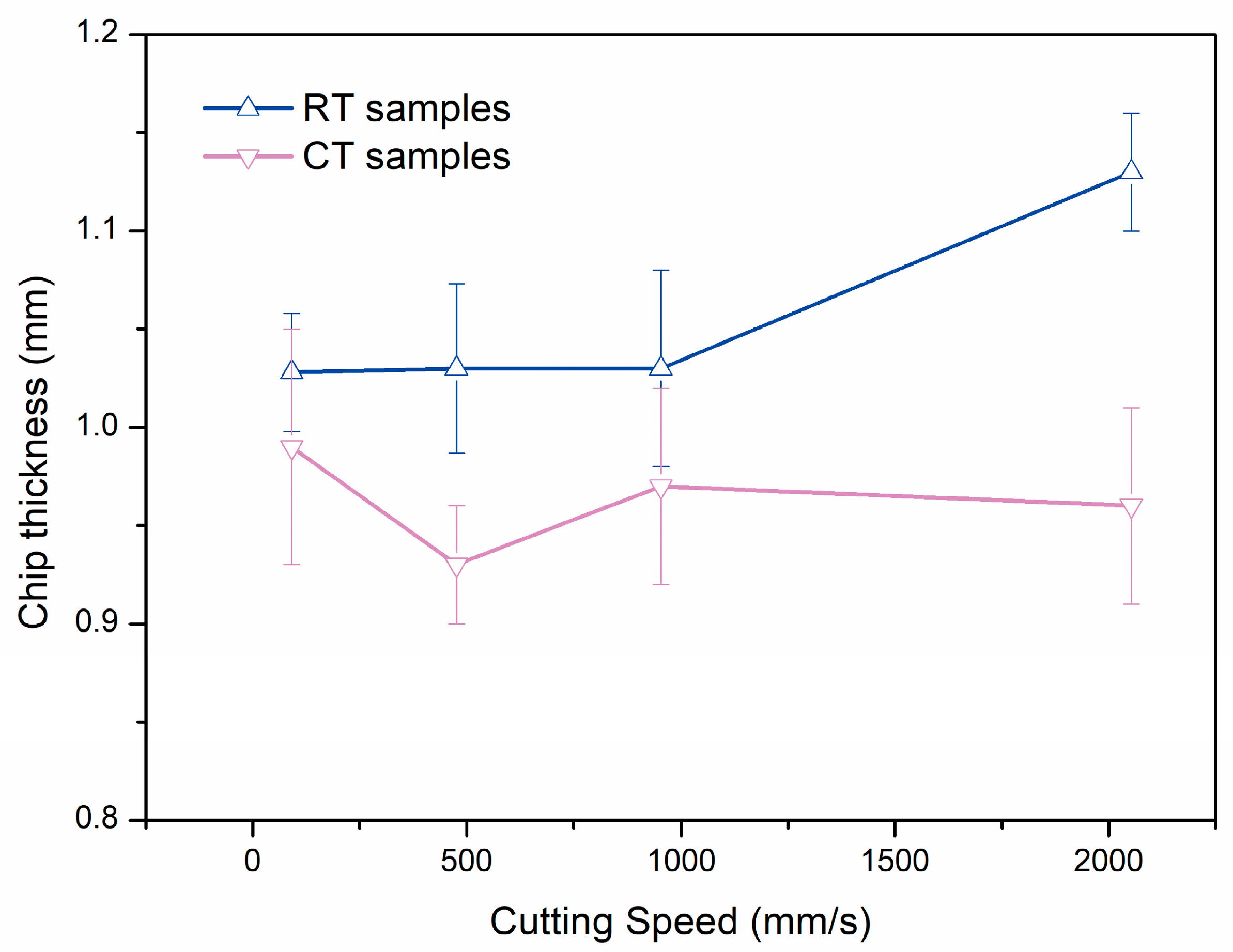
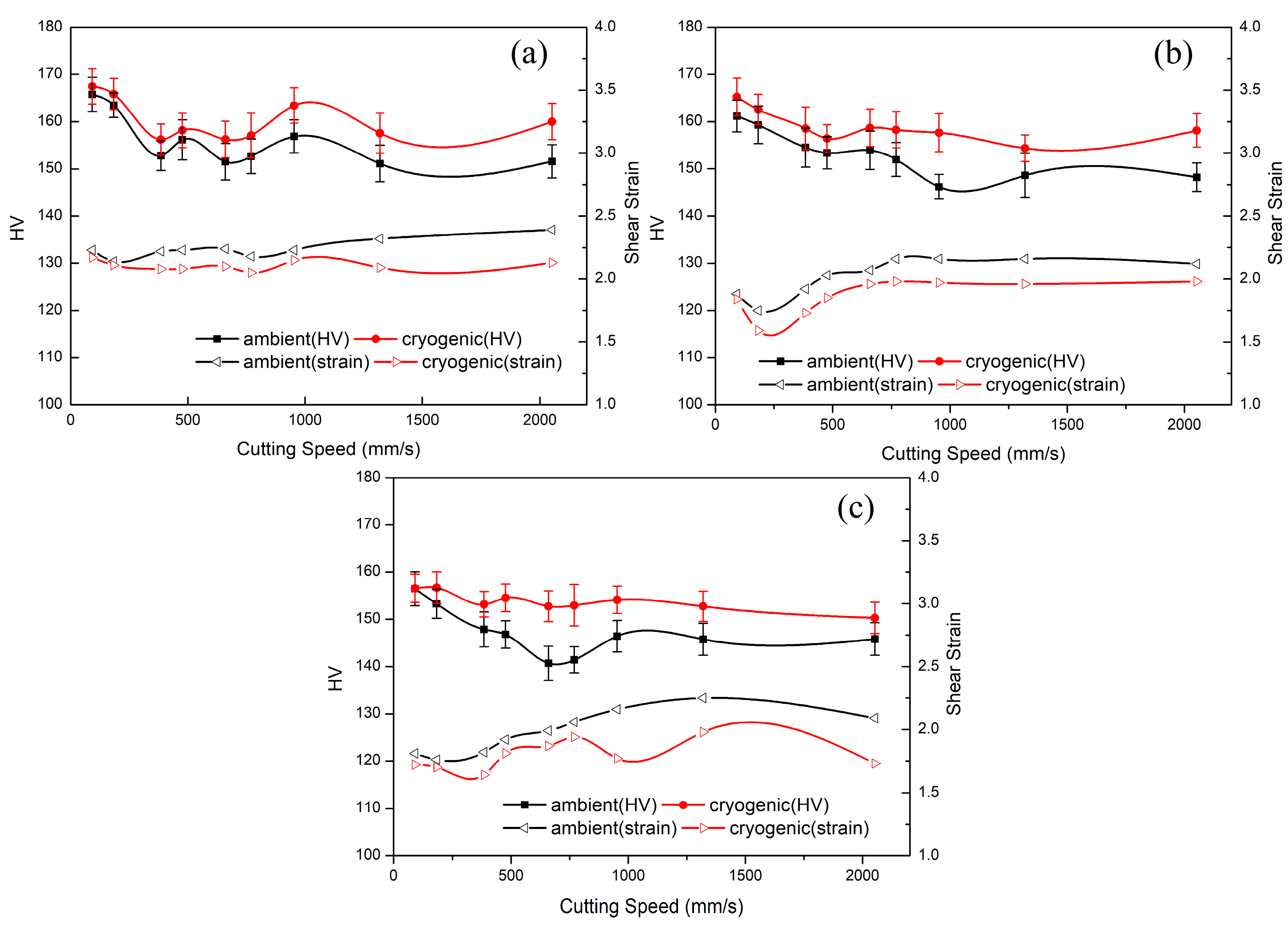
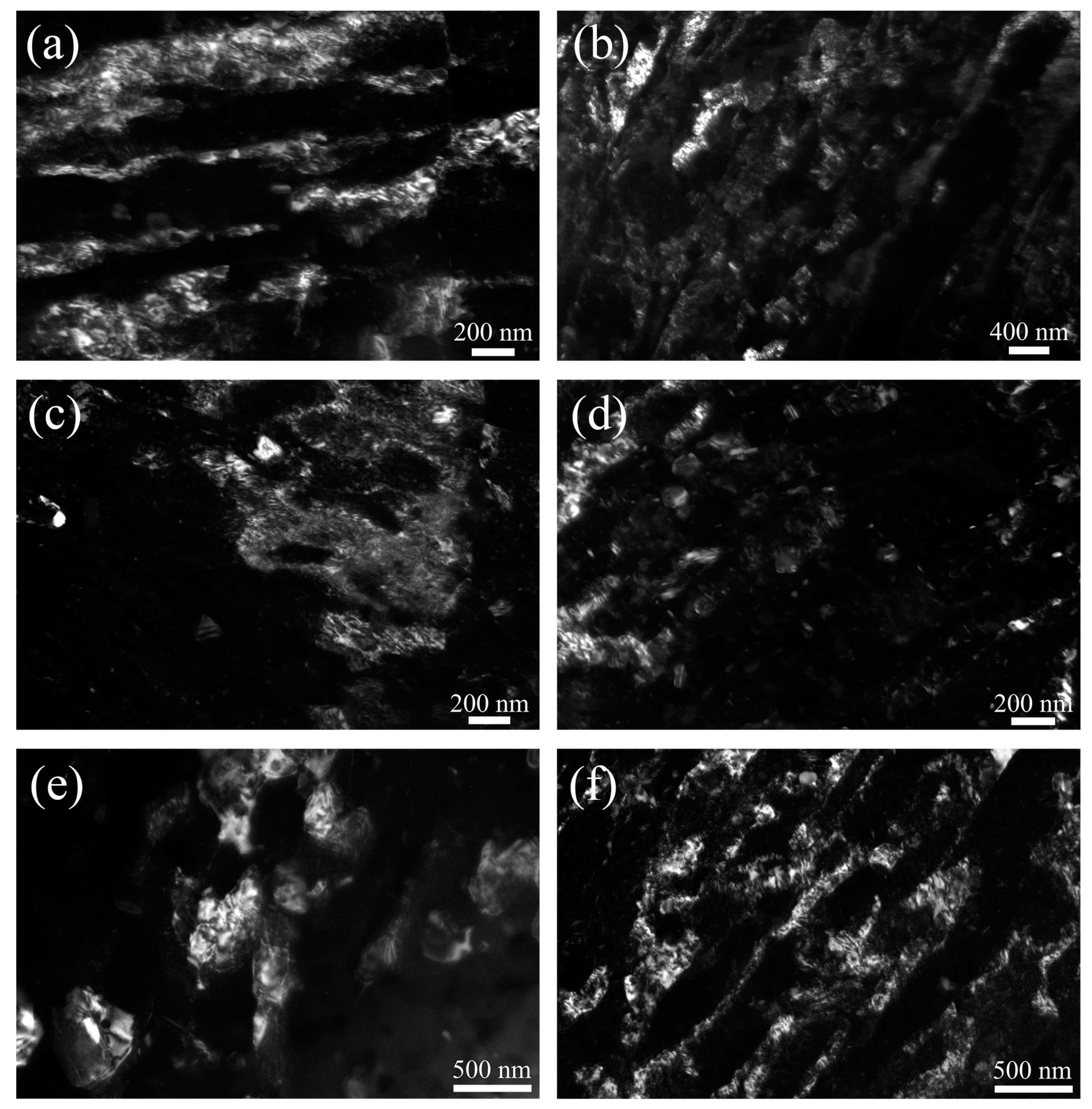
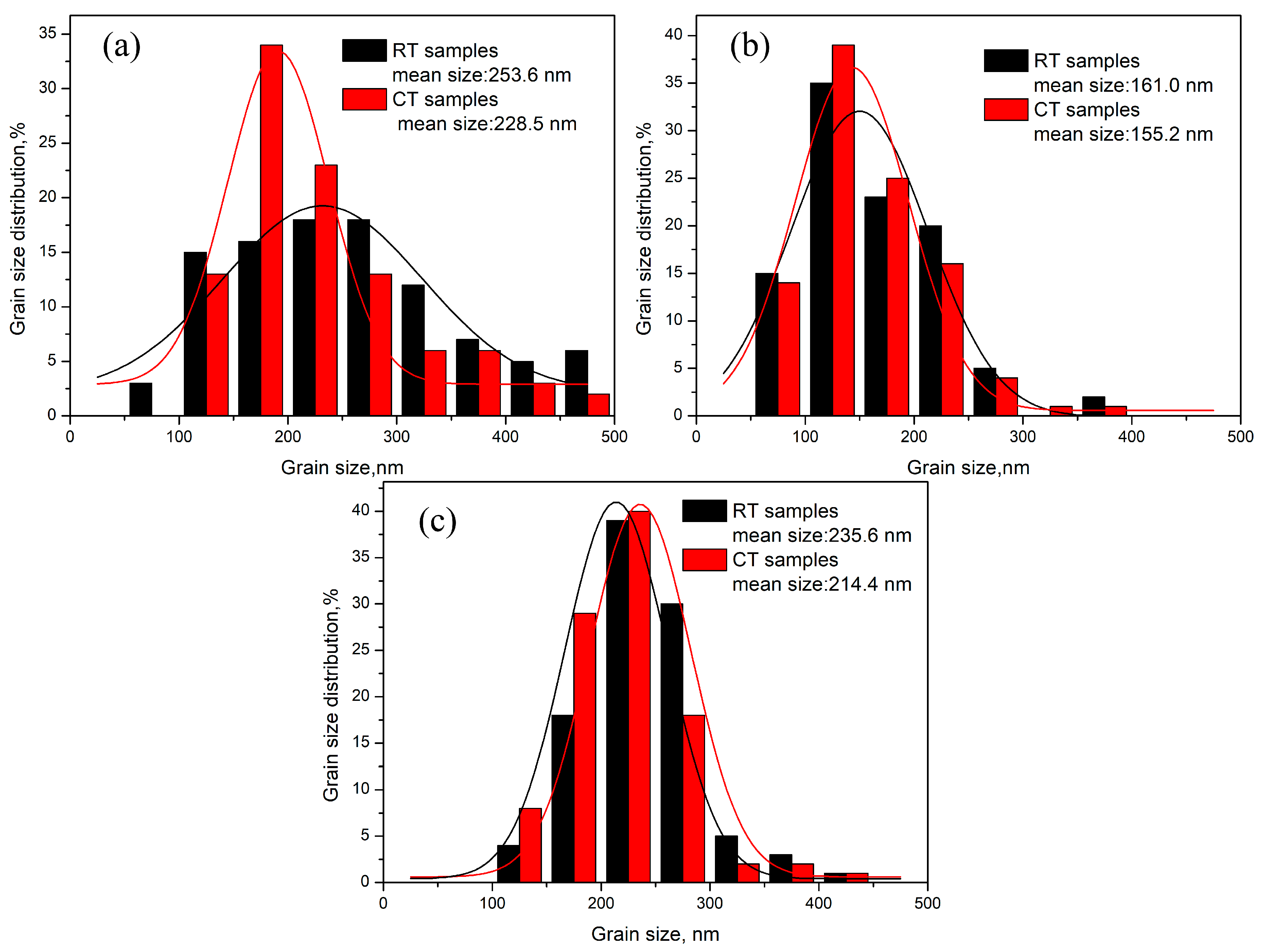
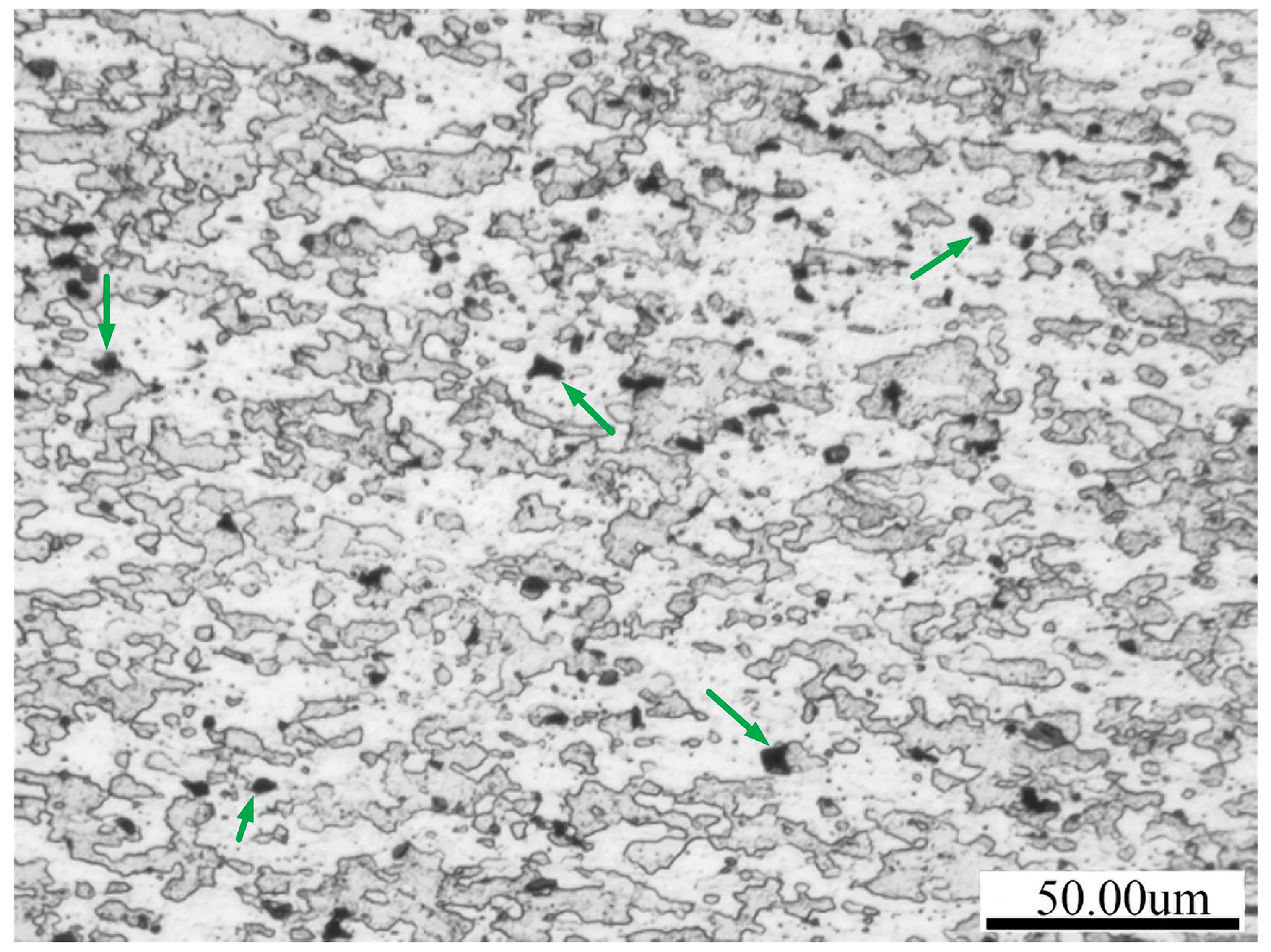
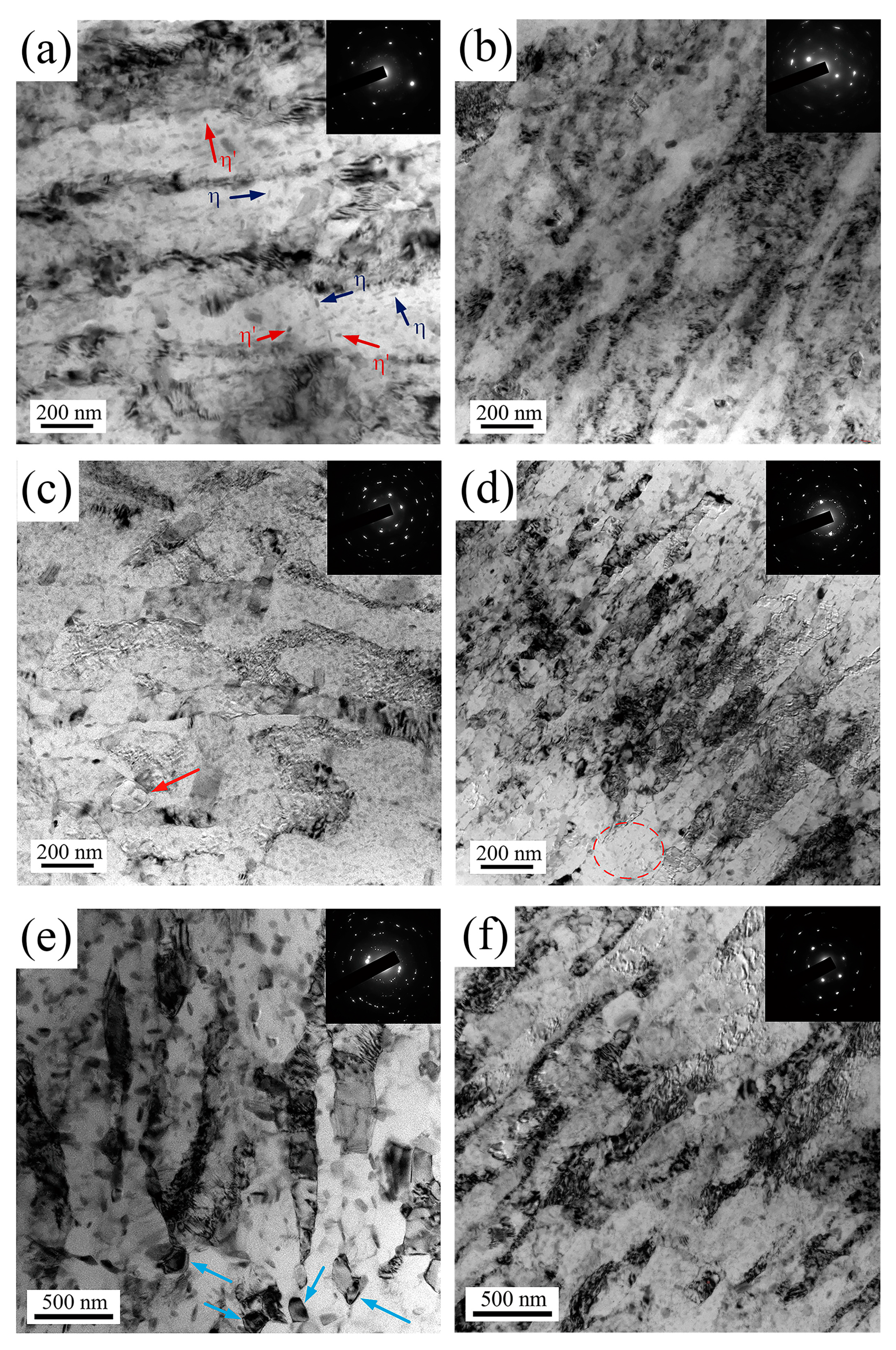
| Al | Zn | Mg | Cu | Fe | Si | Mn | Cr | Ti |
|---|---|---|---|---|---|---|---|---|
| Balance | 5.60 | 2.50 | 1.60 | 0.50 | 0.40 | 0.30 | 0.23 | 0.20 |
| Variable Parameters | |||
|---|---|---|---|
| Rake Angle (°) | Cutting Velocities(mm/s) | ||
| 10 | 92 | 183 | 385 |
| 15 | 476 | 660 | 770 |
| 20 | 9553 | 1319 | 2053 |
| Fixed parameters | |||
| 7mm | 0.5mm | ||
© 2020 by the authors. Licensee MDPI, Basel, Switzerland. This article is an open access article distributed under the terms and conditions of the Creative Commons Attribution (CC BY) license (http://creativecommons.org/licenses/by/4.0/).
Share and Cite
Chen, H.; Zhang, B.; Zhang, J.; Deng, W. Preparation of Ultrafine-Grained Continuous Chips by Cryogenic Large Strain Machining. Metals 2020, 10, 398. https://doi.org/10.3390/met10030398
Chen H, Zhang B, Zhang J, Deng W. Preparation of Ultrafine-Grained Continuous Chips by Cryogenic Large Strain Machining. Metals. 2020; 10(3):398. https://doi.org/10.3390/met10030398
Chicago/Turabian StyleChen, Haitao, Baoyu Zhang, Jiayang Zhang, and Wenjun Deng. 2020. "Preparation of Ultrafine-Grained Continuous Chips by Cryogenic Large Strain Machining" Metals 10, no. 3: 398. https://doi.org/10.3390/met10030398
APA StyleChen, H., Zhang, B., Zhang, J., & Deng, W. (2020). Preparation of Ultrafine-Grained Continuous Chips by Cryogenic Large Strain Machining. Metals, 10(3), 398. https://doi.org/10.3390/met10030398




